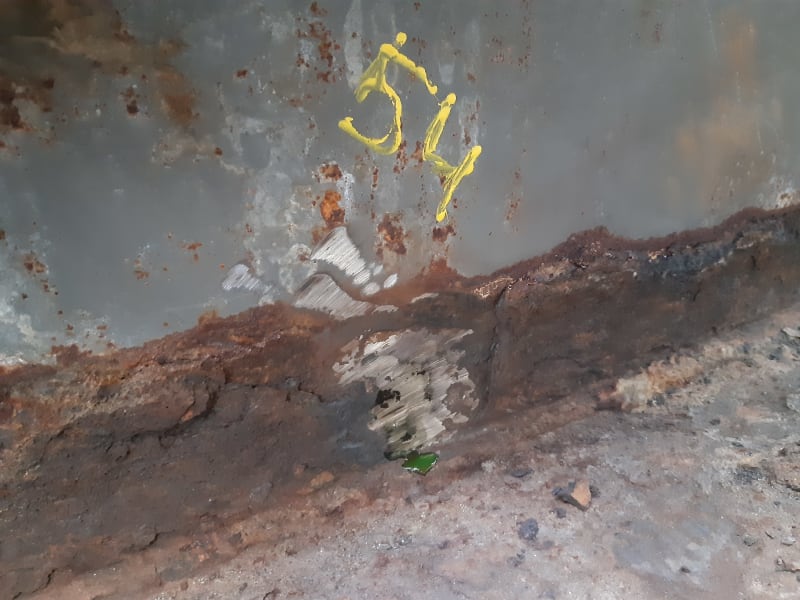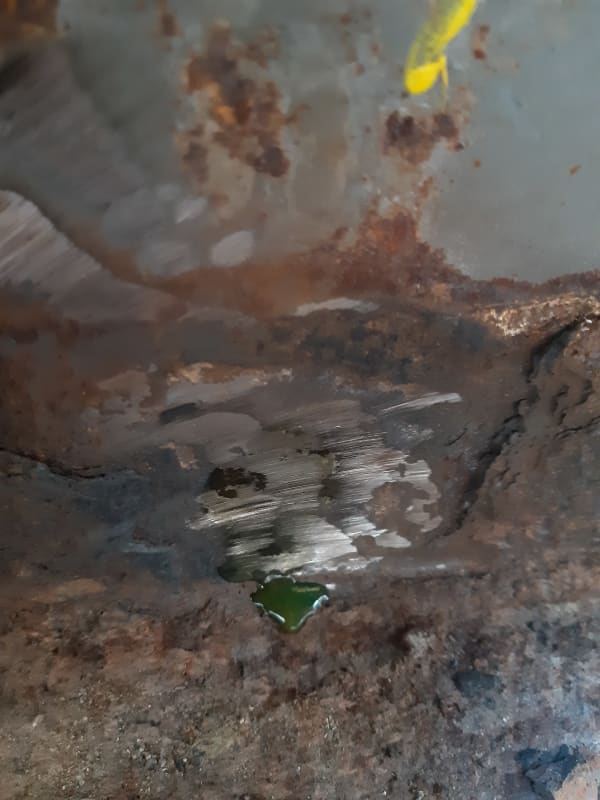Andres Romero
Petroleum
- Jan 3, 2022
- 15
We have a tank that has a strip of corrosion around the perimeter of the first course.
The corrosion stripe is produced by corrosion under insulation (CUI).
The corrosion strip has a height of approximately 100 mm and is located at the bottom of the first course.
My question is how to evaluate this corrosion.
The thicknesses must be averaged as stated in paragraph 4.3.2.1 of API 653 or I must consider it as generalized corrosion and evaluate it according to paragraph 4.3.3.1 b) of API 653.
I don't like the idea of averaging the thicknesses since it is a low strip along the entire perimeter, the result of averaging the thicknesses is very high.
I attach photos of the corroded area.
Kind regards



 Hello everyone, I have a question when evaluating corrosion in the shell of a tank.
Hello everyone, I have a question when evaluating corrosion in the shell of a tank.
The corrosion stripe is produced by corrosion under insulation (CUI).
The corrosion strip has a height of approximately 100 mm and is located at the bottom of the first course.
My question is how to evaluate this corrosion.
The thicknesses must be averaged as stated in paragraph 4.3.2.1 of API 653 or I must consider it as generalized corrosion and evaluate it according to paragraph 4.3.3.1 b) of API 653.
I don't like the idea of averaging the thicknesses since it is a low strip along the entire perimeter, the result of averaging the thicknesses is very high.
I attach photos of the corroded area.
Kind regards




